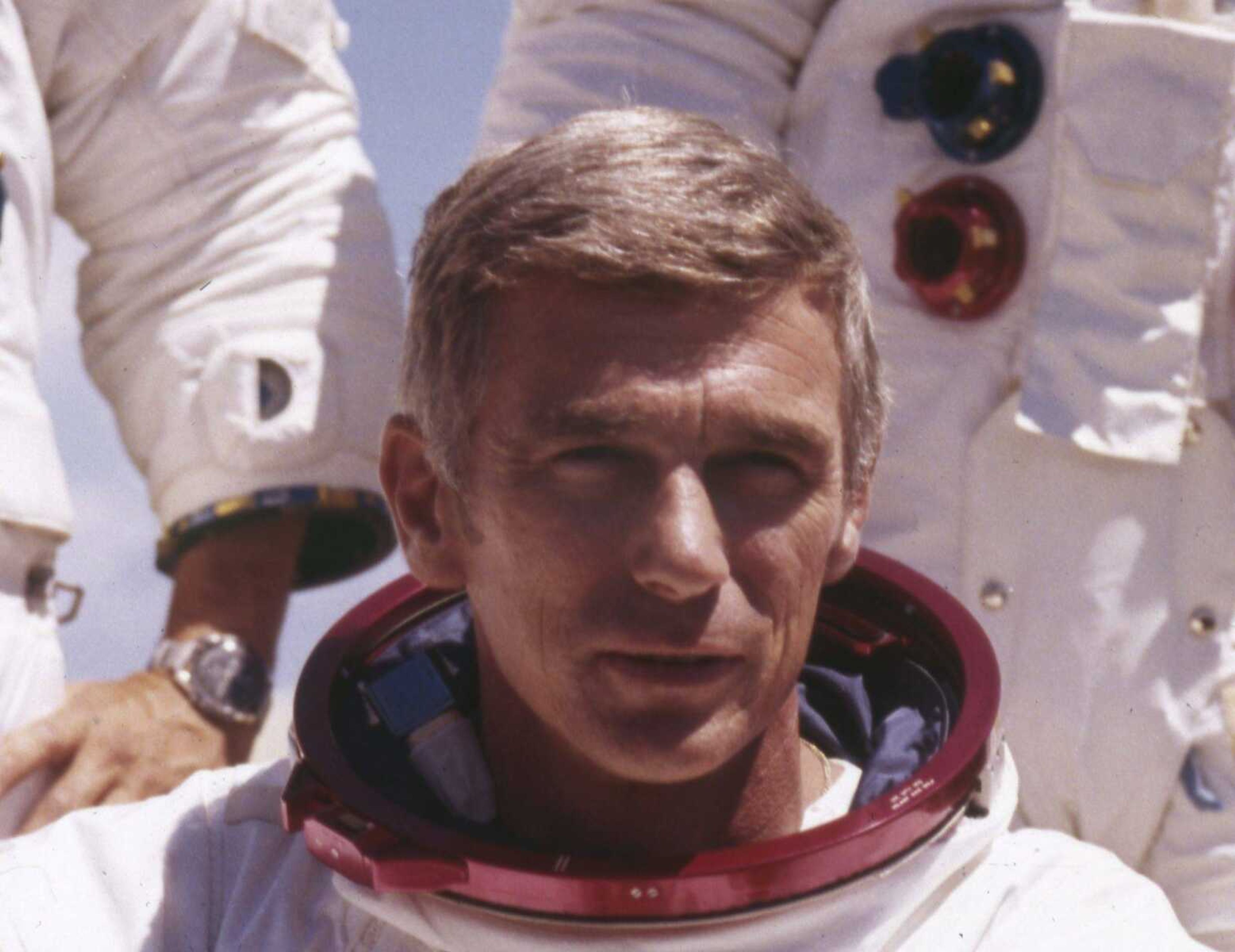Gene Cernan, last astronaut on the moon, dies at 82
Former astronaut Gene Cernan, the last of only a dozen men to walk on the moon who returned to Earth with a message of "peace and hope for all mankind," has died. He was 82. NASA announced Cernan died Monday surrounded by his family. NASA spokesman Bob Jacobs confirmed the death but had no details...
Former astronaut Gene Cernan, the last of only a dozen men to walk on the moon who returned to Earth with a message of "peace and hope for all mankind," has died. He was 82.
NASA announced Cernan died Monday surrounded by his family. NASA spokesman Bob Jacobs confirmed the death but had no details.
Cernan, commander of NASA's Apollo 17 mission, set foot on the lunar surface in December 1972 during his third space flight. He became the last person to walk on the moon Dec. 14, 1972, tracing his only child's initials in the dust before climbing the ladder of the lunar module the last time. It was a moment that defined him in the public eye and his own.
"Those steps up that ladder, they were tough to make," Cernan recalled in a 2007 oral history. "I didn't want to go up. I wanted to stay a while."
Cernan called it "perhaps the brightest moment of my life. ... It's like you would want to freeze that moment and take it home with you. But you can't."
Decades later, Cernan tried to ensure he wasn't the last person to walk on the moon, testifying before Congress to push for a return.
But as the years went by, he realized he wouldn't live to see someone follow in his footsteps -- still visible on the moon more than 40 years later.
"Neil (Armstrong, who died in 2012) and I aren't going to see those next young Americans who walk on the moon. And God help us if they're not Americans," Cernan testified before Congress in 2011. "When I leave this planet, I want to know where we are headed as a nation. That's my big goal."
On Dec. 11, 1972, Cernan guided the lander, named Challenger, into a lunar valley called Taurus-Littrow, with Harrison "Jack" Schmitt at his side. He recalled the silence after the lunar lander's engine shut down.
"That's where you experience the most quiet moment a human being can experience in his lifetime," Cernan said in 2007. "There's no vibration. There's no noise. The ground quit talking. Your partner is mesmerized. He can't say anything.
"The dust is gone. It's a realization, a reality, all of a sudden you have just landed in another world on another body out there (somewhere in the) universe, and what you are seeing is being seen by human beings -- human eyes -- for the first time."
Three days earlier, Cernan, Schmitt and Ronald Evans had blasted off atop a Saturn rocket in the first manned nighttime launch from Kennedy Space Center. Evans remained behind as pilot of the command module that orbited the moon while the other two landed on the moon's surface. Cernan and Schmitt, a geologist, spent more than three days on the moon, including more than 22 hours outside the lander, and collected 249 pounds of lunar samples.
Connect with the Southeast Missourian Newsroom:
For corrections to this story or other insights for the editor, click here. To submit a letter to the editor, click here. To learn about the Southeast Missourian’s AI Policy, click here.










